#Sacred Tree
Explore tagged Tumblr posts
Text

I may be thinking about this too much but does anyone else think that the spot where Inuyasha was sealed look like a jewel shard fragment? Just me? Cool cool
#inuyasha#inukag#screaming and crying#she loves him#knawing at the bars of my enclosure#otp#kagome inuyasha#kagome higurashi#sacred tree
163 notes
·
View notes
Text

The walnut tree of Benevento is a legendary ever green tree presumably located of the Riverbank of the Janaras, the place on the bank of the Sabato river. According to folklore the tree was an ancient, leafy walnut tree consecrated to the Germanic god Odin situated near Benevento where a community of Lombards settled in territories originally inhabited by the Samnites.
Legend has it that witches, called Janaras, at night anointed their armpits or chests with ointment and took flight by uttering a magic phrase riding a sorghum broom to reach the Benevento Walnut Tree, where sabbaths and pagan rites were held.
Legend traces its origins to earlier pagan cults existing in the area, particularly the cult of Isis, the Egyptian goddess of magic, whose worship had spread in Roman times through syncretism with other goddesses such as Diana and Hecate.
Other origins of the legend are linked to the Lombard cult of the god Wotan, according to which it was customary to hang the skin of a goat from the branches of the sacred tree so that worshippers could gain the god's favor by frantically running around the tree on horseback, tearing off shreds of skin that they then ate.
Benevento's Christians would have connected these frenzied rites with their existing beliefs about witches: in their eyes women and warriors were witches, the goat was the embodiment of the devil, and the shouting was orgiastic rituals.
#witchcraft#witchblr#paganism#witches of tumblr#italian witchcraft#italian folklore#italian traditions#traditional witchcraft#folk traditions#folklore#sacred tree#sacred places#history of witchcraft#stregheria#italianwitch#strega
73 notes
·
View notes
Text
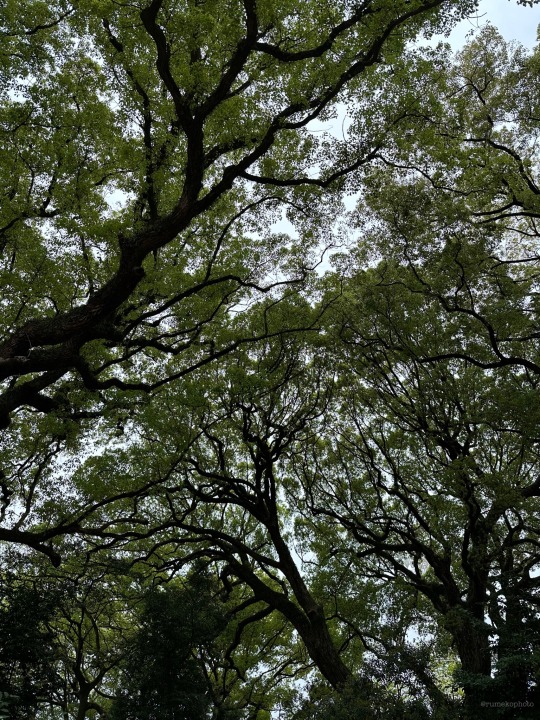
celestial sound
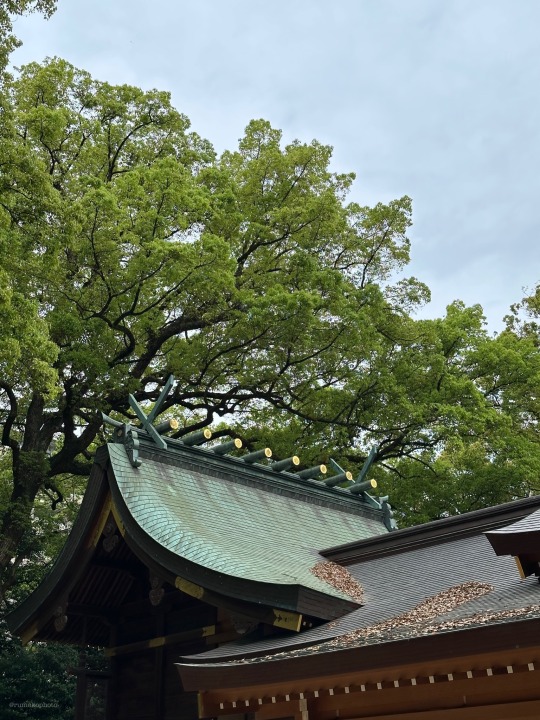

潔
49 notes
·
View notes
Text
Random pet peeve I have with the nnt English wiki: WHY IS THE GREAT TREE LABELED THE SACRED TREE???
Like I could be wrong, but I’m pretty sure the Sacred Tree and Great Tree are seperate entities. The Cursed by Light movie literally shows them having different designs.
Like the Sacred Tree lies in the Fairy realm (only accessible to fairies) and the Great Tree lies in the Fairy King’s Forest. I always understood that the Great Tree was an extension of the Sacred Tree but in Britannia. Since the Fairy King’s Forest acts like a border between the human and fairy realm.
And just to support my reasoning that I’m not crazy and they are in fact different: Don’t you think it’d be a pretty big deal if the literal GOD OF THE FAIRIES DIED FROM A RED DEMON. And like don’t you think it’d be a bigger deal for fairies if your god/creator died? Instead of just a “Boo Harlequin you suck” moment.
Anyways this is a rant I remember having in my head four years ago, and I just wanted to get it out.
(Idk guys am I delusional?)
If y’all have any thoughts or evidence to support or refute my claims please share 🙏
#4kota#4koa#7ds#four knights of the apocalypse#nanatsu no taizai#nnt#sds#seven deadly sins#gloxinia#harlequin sds#king sds#sacred tree#great tree
21 notes
·
View notes
Text

Saint Boniface Felling Donar's Oak by Johann Michael Wittmer
#johann michael wittmer#art#saint boniface#st boniface#anglo saxon#apostle#frankish empire#donar's oak#sacred grove#christianity#christian#pagan#paganism#europe#european#history#religious art#religion#francia#germania#germanic#oak tree#germany#thor's oak#sacred tree#god#christendom#franks#frankish#jove's oak
36 notes
·
View notes
Text
Working with the Common Hazelnut, and By Proxy the Birch Tree

This botanical print (German, circa 1890) shows the close relationship between the birch and hazelnut trees. Both are sacred spring time trees in their respective growing areas.
In my post about this year’s Morana doll, I mentioned that I plan on working with the common hazel this year. While not a native plant, we do have one on the side of our house that my Mother-in-Law planted. I usually tend to work with native plants, but in this case I’m excited to work with a sacred plant from the old country.
I fashioned this year’s spring Morana dolly (this is the one that I will drown next year) from some of the younger, slender branches.
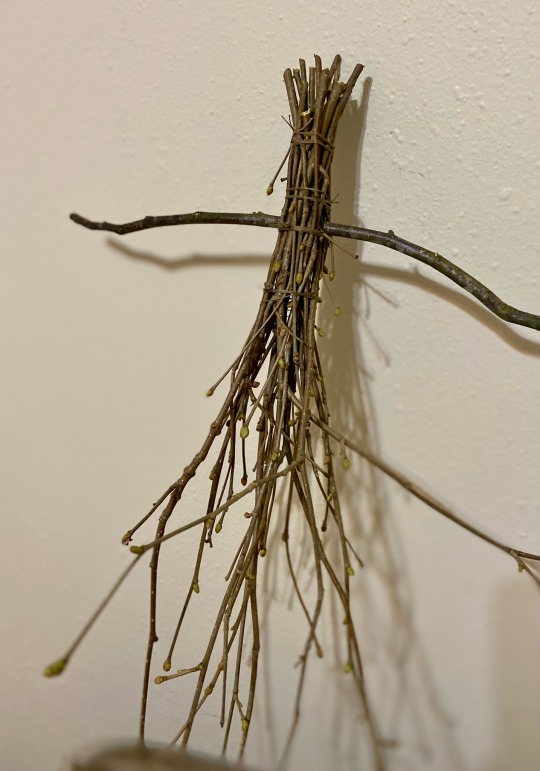
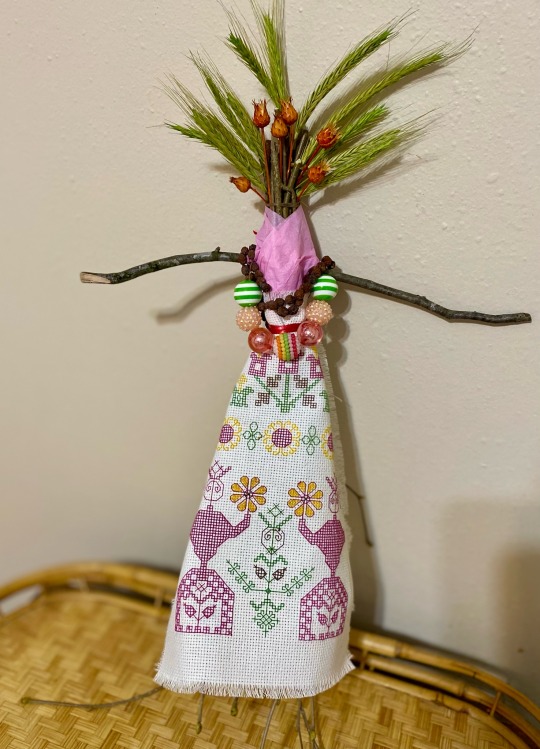
I chose hazel to work with because it is one of the earliest Spring trees to leaf out in the British and Irish isles, where a good half of my ancestors are from, and because of its close relationship to the birch, which is important to the spring customs of my Slavic ancestors. I ran the botanical print above through google translate. Below is the original German.
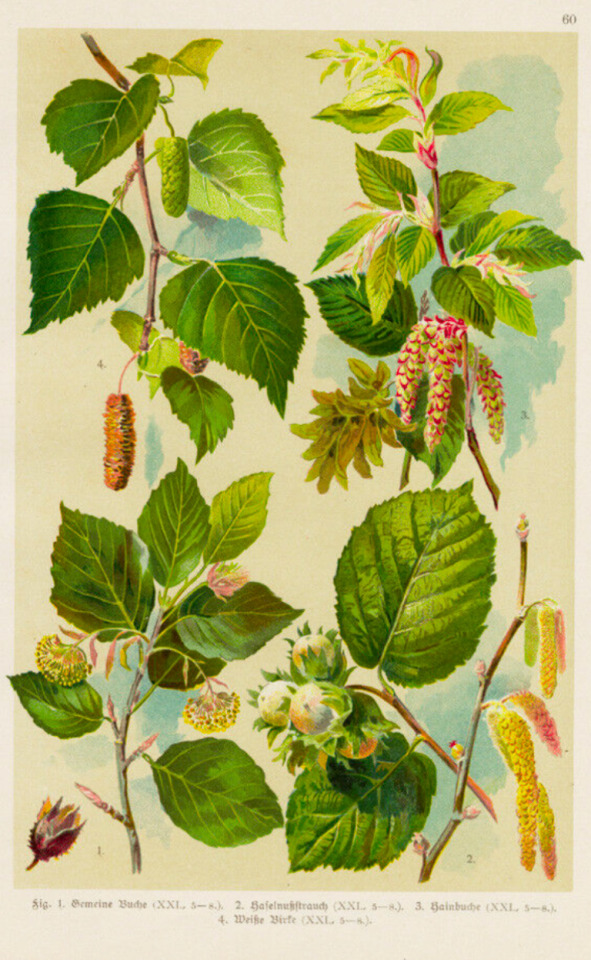
“Nicholas Culpeper classified the hazel as a plant of Mercury, while William Lilly assigned it to Jupiter (Harrington 2020: 65). According to Christina Oakley Harrington, Mercury’s caduceus was made of hazel, as was Circe’s wand (Harrington 2020: 65). The tree’s links with Mercury make sense given Mercury’s role as the god of intelligence and communication. This reflects the association between hazel and wisdom that we’ll come back to later.”
—Hazel Trees in Folklore: Protection, Divination and Magic
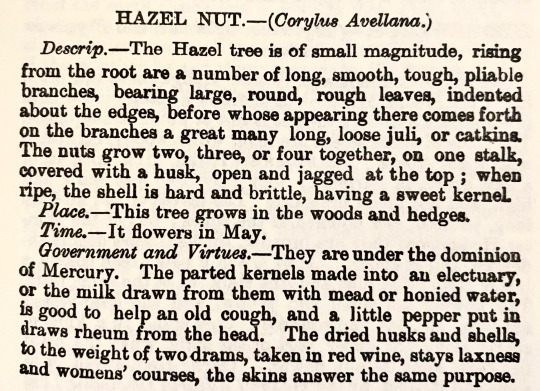
The write-up in my copy of Culpepper
I don’t really have a relationship with the Greek pantheon, so I’ll be doing the old Roman thing of considering Woden and Veles as essentially the same god as Mercury, if I decide to work with any gods on my exploration of the hazel.
According to google:
“In the context of astrology and herbalism, a plant being "under the dominion of Mercury" means that its characteristics and medicinal properties are believed to be strongly influenced by the planet Mercury, signifying traits like quick energy, adaptability, communication, and mental alertness, often manifesting in the plant's appearance, taste, and healing abilities.”
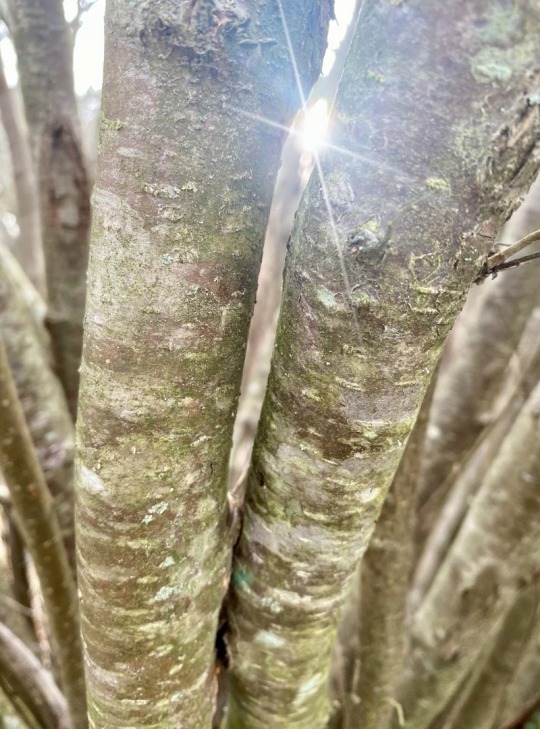
The lowering sun peeking through the many trunks of our hazel tree.
I was already thinking to substitute hazel branches for the willows brought in on Palm Sunday in Czech villages to protect from fire and lightning and ran across this:
“Gathering hazel twigs on Palm Sunday could protect a home from lightning or fire [British and Irish Isles]”
——Hazel Trees in Folklore: Protection, Divination and Magic
This was just a brief dip of my toes into the folklore of hazel and birch trees; I’m looking forward to a deeper dive as the year progresses.
13 notes
·
View notes
Text



Sacred Springs 🌲
I'm an autistic amateur photographer based in Japan. Follow me on Tumblr and Instagram 📷
29 notes
·
View notes
Text
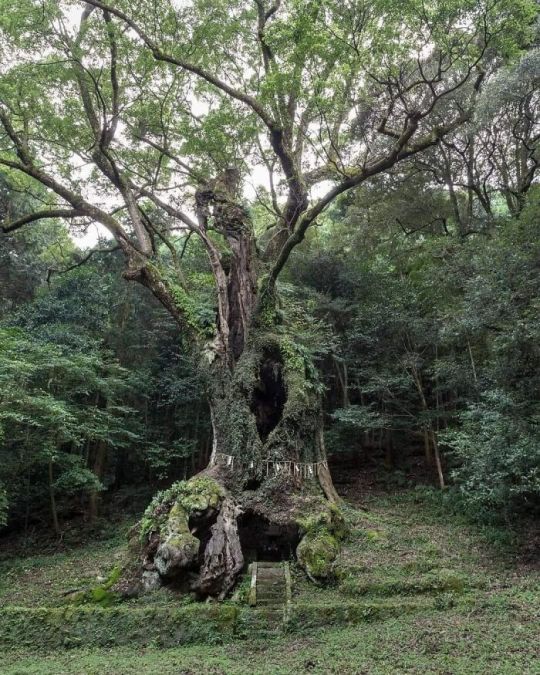
Takeo's Okusu Tree Over 3000 years old, this camphor tree is the 7th largest tree in Japan. It is 30m tall with a trunk circumference of 20m, its branches span 30m wide from east to west, and 33m wide from north to south. This is the sacred tree of Takeo Shrine, which was built in the Nara period (735 CE). The roots of the tree resemble the feet of elephants and are wrapped in rough bark, with their central section split open near the surface of the ground. Inside is a gaping cavity with an area of 12 tatami mats, which houses a stone shrine deep within.
#japan#Takeo's Okusu Tree#okusu tree#sacred tree#camphor tree#Takeo shrine#Nara period#beauty#beautiful#nature#landscape#scenery#photography
33 notes
·
View notes
Text
CRAZY THEORY INCOMING
I think my brain just glitched...
Ok so... Camelot. Arthur made Camelot through the power of Chaos right. At first, I found it weird that Arthur even needed to steal parts of Britannia to make Camelot. Chaos is incredibly powerful, it literally made three powerful deities that made their own realms for their own created races. So... why can't Arthur just make Camelot on its own. Then, it was later established that these places and people in Camelot are made through the wishes and wants of the people, without it there's nothing. If Chaos is so powerful, why is Arthur limited through that? Then it clicked.
The Sacred Tree is still alive
The Sacred Tree is essentially an embodiment of Nature. Disaster, a power granted by The Sacred Tree to the Fairy Kings is an ability that grants control over life and death.
The 'people' within Camelot function like a physical illusion. They're 'alive' but not really. They're just there, fueled by a wish. They don't even grow old, they just stay like that because that's all they are an illusion, they're not alive because there's no life.
The Demon King's power is darkness. The Supreme Diety's power is light. The Sacred Tree's power is life.
Notice how unnatural-looking the Chaos monsters are. Almost demonic even. That, to me, shows that Chaos is unstable.
The Demon King and his Commandments and The Supreme Deity and her graces are somewhat of an extension of themselves, it's their power passed to others. If we correlate this to Chaos creating the DK, SD and ST as Chaos sacrificing parts of their power, that power is lost or weakened because they have it. But the DK and SD are no longer present and since they are created by Chaos, that power most likely goes back to it. That is my assumption at least. But the graces are still out there. Ludo, Sariel, and Tarmiel died with their graces so they'll just go back after a few thousand years with their graces so that part of the SD probably didn't even go back to Chaos.
I made a post way back and on that, I compared the Commandments and Graces to Disaster as all three are just an extension of the DK, SD, and ST's power, in there I noted how Disaster is different as all three Fairy Kings can use it even if they're all present, it's not like the Commandments and Graces that only one person can use it. So that is also interesting.
There is also a complete lack of Sacred Tree information and just now, in 4kota is literally the first time we ever step foot inside the Fairy Realm and we got more Fairy Lore which is really nice. Now, what if the reason behind the lack of information about the Sacred Tree is because of Chaos. Nakaba doesn't want us to know anything about Chaos up until the very end because of 4kota, because he wants to keep Chaos a mystery.
In Chapter 140, Tioreh told us about these giant mushrooms that grow on top of the Sacred Tree's roots that are called "God Seats". The DK and SD are the only ones primarily dubbed as Gods. So that part is also interesting.
This is the Demon King's last words to Meliodas.

"You will regret this..."
In Cursed By Light, before Meliodas and Zeldris beat the Supreme Deity, she says that the only way to maintain balance in the world is by continuing the Holy War.
Before Chaos is established, this is just nonsense. But now that we know... I have a feeling that the DK and SD sealing away Chaos has more to it than what we know. Also, isn't it fun that two beings born to be in conflict with one another worked together to seal Chaos? Now, we don't get to know more because they're gone but the Sacred Tree is still around... so there's that.
I have a huge feeling that Nakaba will give us some juicy lore about the Sacred Tree in the future. Either that or I'm high on copium.
#3 am rambles#who needs sleep#I dunno if any of this makes any sense#take whatever this is with a grain of salt#try to decode my thought process lol#4kota theory#nnt theory#Chaos#Supreme Deity#Demon King#Sacred Tree#nanatsu no taizai#four knights of the apocalypse#4kota#nnt#seven deadly sins#mokushiroku no yonkishi#seven deadly sins sequel#nanatsu no taizai mokushiroku no yonkishi
53 notes
·
View notes
Text
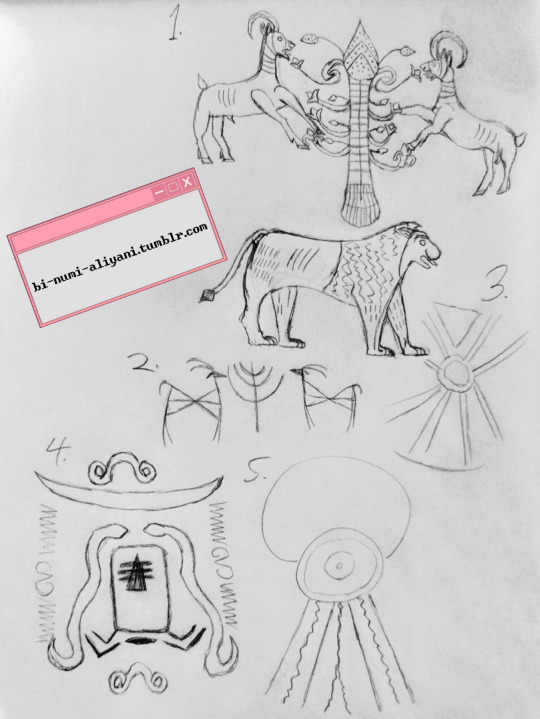






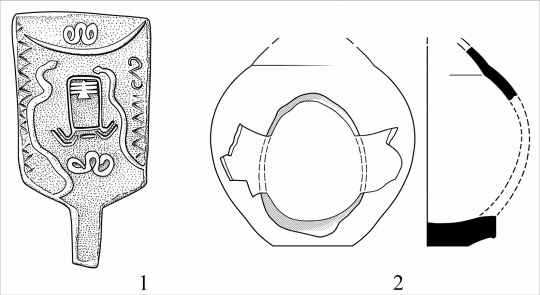


Hello, friends! I apologize for my absence as of late, I unfortunately ended up in a situation where I didn't have access to the internet for a little while and had to get everything sorted out. There's a lot of things I'm excited to do here, but for now I'd just like to hopefully make up for it with these sketches of ancient symbols of 𒀭ʾEl-ʿElyon and 𒀭Lady ʾAshirat :)
Great Seal of 𒀭ʾAshirat: This is the Asherah-tree symbol as it appears on the famous Pithos A from the Kuntillet ʿAjrud site. It probably came from around the early 8th century BCE when the former Judean outpost was under Northern Israelite control and bears a now-famous inscription mentioning “𒀭Yahweh of Samaria and 𒀭ʾAsheratah.” The ornately-depicted Sacred Tree nourishes two flanking ibex, the sacred animal of 𒀭ʾAshirat, and rests above a lion which symbolizes a Deity's strength in ancient Canaanite iconography.
Small Seal of 𒀭ʾAshirat: This more simplistic iteration of the Tree-and-Ibex symbol is found on the famous Lachish ewer from the end of the Bronze Age and is most notable for its remarkable resemblance to the Menorah of the later Temple of 𒀭Yahweh at Jerusalem.
Small Solar Seal of 𒀭ʾEl: This design is found on the head of a sceptre held by a bronze seated figurine of 𒀭ʾEl in intact gold leaf from a Bronze-Age Temple at Megiddo (Tel Megiddo). It was made around the same time as the Lachish ewer and is believed to invoke the Sun and its beams in a similar way to more recognizable Egyptian or Mesopotamian solar symbols. Another theory holds that it depicts a flower.
Seal of the House of 𒀭ʾEl: Yet another 13th century BCE find, this peculiar insignia is featured on a bronze sceptre head coated in silver leaf which would have been inserted into a wooden pole to be grasped by a life-sized cult statue of 𒀭ʾEl. A stylized human face is flanked by serpents and zigzag lines topped with an upturned crescent. At the bottom and the top is another sign resembling the omega-shaped womb symbol originally associated with the Mother Goddess 𒀭Ninhursag of the Sumerian Pantheon (cf. the cow uterus headdress of the ancient Egyptian childbirth Goddess 𒀭Meskhenet and the “Hathoric curls” hairstyle associated with 𒀭Lady ʿAshtart and 𒀭Qadesh). This design was described as a “cult standard” by the archaeological team who discovered it in a destruction layer at Hazor (Tel Hazor) in the 1950s and I've interpreted it to symbolize the House of 𒀭ʾEl which is also the House of all the Gods and Goddesses. The artifact was found in what appeared to be a small shrine indicating it possibly received some kind of veneration of its own.
Great Solar Seal of 𒀭ʾEl: This is from another bronze sceptre head with silver leaf and was discovered in a 12th century BCE layer at the site of a Canaanite Temple in Lachish (Tell ed-Duweir). I've followed the interpretation that this is a solar symbol similar to the one from Megiddo. A solar disc with three nesting circles is backed by a sort of oblong "halo" which represents the Firmament of Heaven in my view. The Sun with its life-giving rays shown descending upon the Earth here has been interpreted as an anthropomorphic figure as well. I can also see the broad outer bands and the thin inner streams having to do with 𒀭ʾEl's Abode of Mount Lalu being located “at the Source of the Two Rivers, at the Confluence of the Channels of the Two Deeps” according to Ugaritic texts.
Thanks so much for checking this out!
My source for the pictures of and information on the 𒀭ʾEl sceptres is “The sceptres of life-sized divine statues from Canaanite Lachish and Hazor” by Yosef Garfinkel in Antiquity 94:375 (2020), pp. 669–685, https://doi.org/10.15184/aqy.2020.44.
#pagan#paganism#semitic pagan#semitic paganism#polytheism#polytheist#canaanite polytheism#canaanite paganism#canaan#canaanite#el#athirat#asherah#bronze age#late Bronze age#ancient near east#history#ancient history#religion#faith#spirituality#gods#mother goddess#sacred tree#ancient levant#archaeology#lachish#hazor#kuntillet ajrud#megiddo
11 notes
·
View notes
Text
Don't you dare to test me I've climbed the sacred tree Yggdrasil which holds the material planes together only to swing on it's branches while dangling my feet in joy
#wizardposting#wizard shit#druid stuff#yggdrasil#sacred tree#joyposting#sillyposting#silly little guy
8 notes
·
View notes
Text
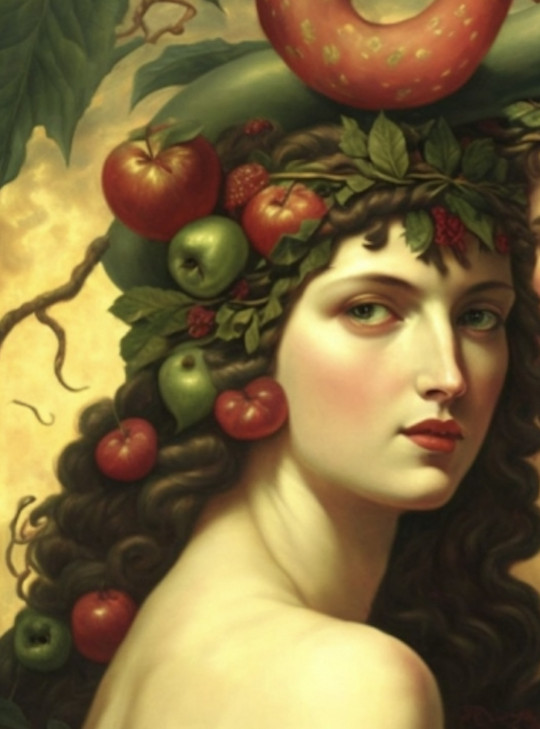
Celtic beliefs in trees (20)
Q for Quert (Apple) - September 2nd - September 29th
“Fruit of love - 10th month of the Celtic Tree Calendar (Ref)”
Star: Venus: Gemstone: emerald,; Gender: female; Patrons: Gaia, Aphrodite, Venus, Hera, Pomona, Nemesis, Astarte, Ishtar, Ceridwen, Olwen, Gwen, Arwen, Shekhinah, Freyja, Iðunn; Symbols: faith + gratitude, love + trust, tolerance + Abundance, self-respect, the work of fate.
The original species of apple is the crab apple. The crab apple belongs to the rose family and has short, flower-bearing young branches with thorns. The fruits are firm, round, acidic and vary in colour from yellow to crimson. September is the apple month, when the flowers bloom in late spring, the sweet fragrance is released and the fruit ripens.
Hazel, oak and apple are all legendary magical fruits, and it is believed that the three fruits together will fulfil all the needs of life. Birch, alder, willow, oak, holly, hazel and apple are designated as sacred trees in ancient Irish law. Of these, the apple and hazel were especially considered sacred trees, so much so that anyone who deliberately cut them down was punished with death.
In classical Western mythology, the 'Paradise Island', a paradise of fruit trees, was thought to contain the Tree of Wisdom, which bore three sacred apples. It is important to remember here that the apple, the fruit of love, was the food of the Celtic gods and they ate apples.
The apple tree, a favourite parasite of mistletoe, was regarded as sacred, especially by druids (Ref2). According to Druidic teachings, holy drops from heaven spilled over into the cauldron of Ceridwen, and the three drops that splashed out of the cauldron became the source of wisdom for the three apples that grow on the Tree of Wisdom. These three drops symbolise the three pillars of the Tree of Life in the Hebrew mystical philosophy of Kabbalah. These three pillars represent the masculine and feminine principles respectively, with the central pillar representing the union of the two. These also coincide with the most sacred symbol of the Druids, the 'three rays', each representing the power of vision, the power to manipulate letters and symbols, and the power to understand them. These strange three drops can be seen as a spiritual energy that gives life energy to all living things.
Legend has it that the Otherworld is a magical land of thickly growing apple trees, and that visitors from the Otherworld often come to this world carrying apple branches. Wearing a piece of apple wood is said to bring about a loved one and a long life, and is an essential part of good luck charms and spells. Apple trees were often planted in gardens in the British Isles, as they were believed to protect the home and bring love to it.
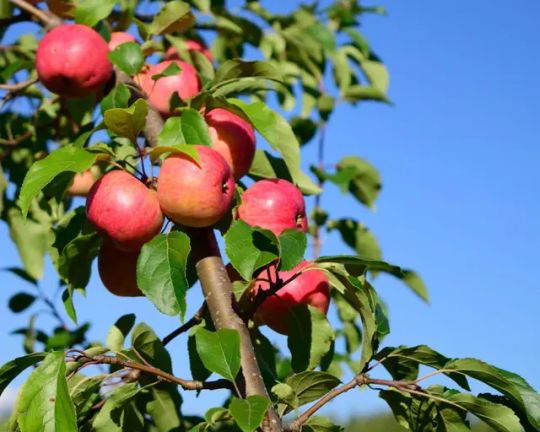
木にまつわる伝説・神話
ケルト人の樹木の信仰 (20)
QはQuert (リンゴ) - 9月2日~9月29日
『愛の果実 〜 ケルトの木の暦(参照)の第10月』
星: 金星: 宝石: エメラルド、; 性: 女性; 守護神: ガイア、アフロディテ、ヴィーナス、ヘラ、ポーモーナ、ネメシス、アスタルテ、イシュタル、ケリドウェン、オルウェン、グウェン、アルウェン、シェキナ、フレイア、イドゥナ; シンボル: 信仰+感謝、愛+信頼、寛容+豊穣、自尊心、運命の仕業
リンゴといえば、原種となるのがクラブアップル (ヤマリンゴ)。クラブアップルはバラ科に属し、花をつけた短い若枝には棘がついている。果実は堅くしまった球形で、酸味が強く、色は黄色から真紅色までさまざまだ。晩春に花が咲き、甘い香りを放ち、果実が熟す9月はリンゴの季節である。
ハシバミ、オーク、リンゴはいずれも伝説的な魔法の果実で、この3つの果実が一緒になれば、人生のあらゆる必要を満たしてくれると信じられている。シラカバ、ハンノキ、ヤナギ、オーク、ヒイラギ、ハシバミ、リンゴは、古代アイルランドの法律では神聖な木として指定されている。このうち、リンゴとハシバミは特に神聖な木とされ、故意に切り倒した者は死をもっ��罰せられたほどである。
古典的な西洋神話では、果樹の楽園である「パラダイス島」には、3つの神聖なリンゴを実らせた「知恵の木」があると考えられていた。ここで忘れてはならないのは、愛の果実であるリンゴはケルトの神々の食べ物であり、彼らはリンゴを食べていたということだ。
ヤドリギが好んで寄生するリンゴの木は、特にドルイド(参照2)から神聖視されていた。ドルイドの教えによれば、天からの聖なる雫がケリドウェンの大釜にこぼれ落ち、大釜から飛び散った3滴が知恵の木に実る3つのリンゴの知恵の源となった。この3滴は、ヘブライ神秘思想のカバラにおける生命の樹の3本の柱を象徴している。この3本の柱はそれぞれ男性原理と女性原理を表し、中央の柱は2つの結合を表している。これらはまた、ドルイドの最も神聖なシンボルである「3本の光線」とも重なり、それぞれが視覚の力、文字やシンボルを操る力、そしてそれらを理解する力を表している。この奇妙な3滴の雫は、あらゆる生物に生命エネルギーを与える霊的なエネルギーと見ることができる。
伝説によると、異界はリンゴの木が生い茂る魔法の国で、異界からの訪問者はしばしばリンゴの枝を携えてこの世にやってくるという。リンゴの木片を身につけると、愛する人と長寿を得られると言われ、幸運のお守りやおまじないには欠かせない。リンゴの木は家を守り、愛をもたらすと信じられていたため、イギリス諸島では庭によく植えられていた。
#trees#legend#mythology#folklore#celtic tree calendar#apple tree#crabapple#fruit of love#spiritual energy#nature#art#legendary magical fruits#sacred tree
95 notes
·
View notes
Text

He knows he looks stunning in his lights
#nature#trees#nature spirits#spiritual awakening#spiritual journey#fae#fairy lights#annunaki#alien species#fallen angels#australia#adelaide#sacred tree
2 notes
·
View notes
Text


peace and prosperity


祈願
55 notes
·
View notes
Text
Tree Hunter Rob McBride

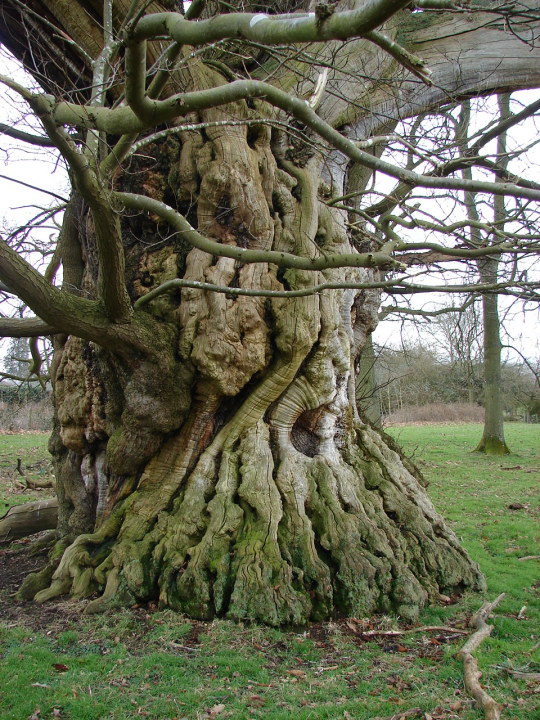

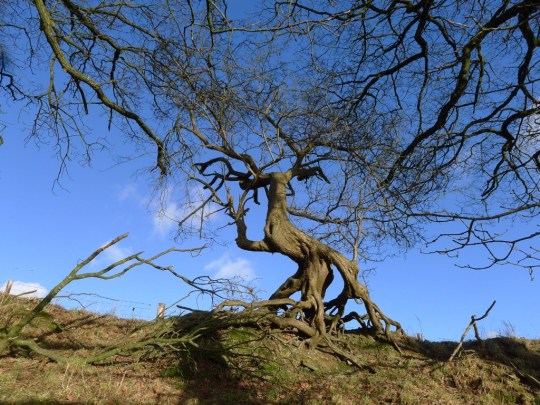


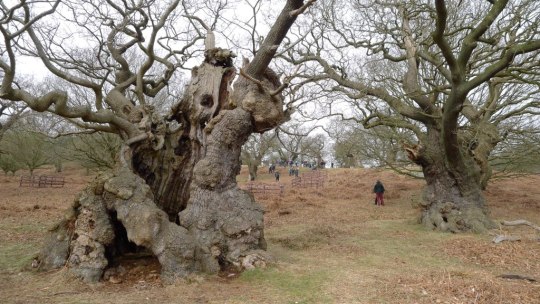
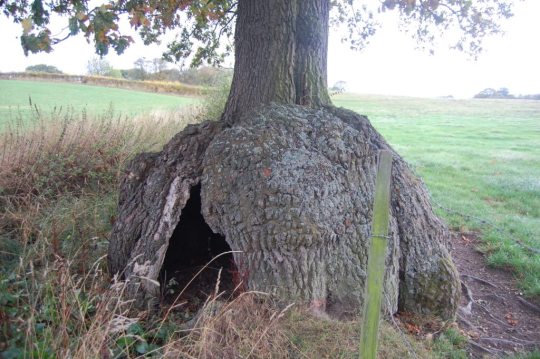

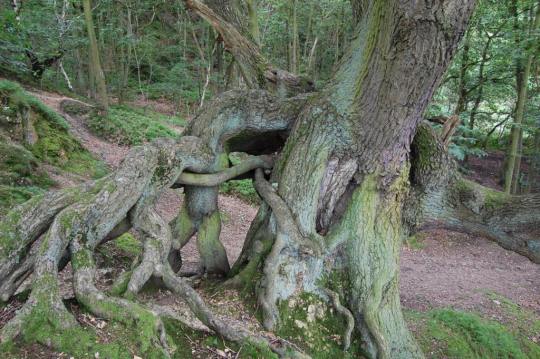
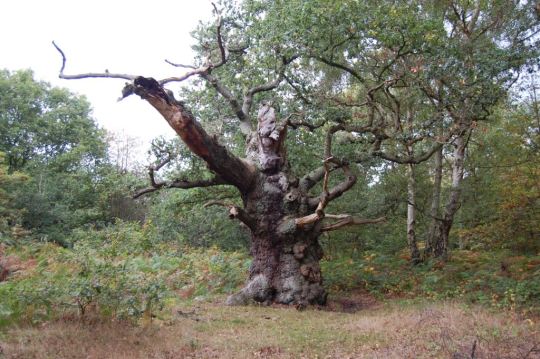



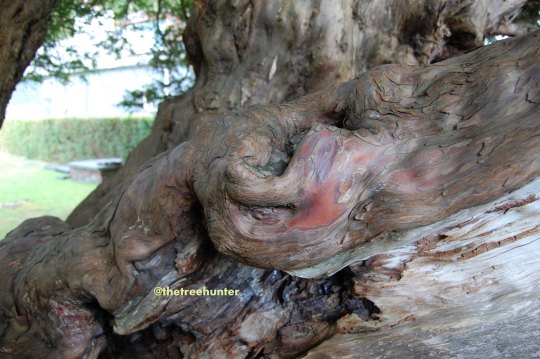


#flickr finds#ancient trees#oak#nature magic#england#chestnut#pareidolia#tolkien#nature lovers#nature patterns#tree bark#old trees#wicca#beautiful trees#elves#forest witch#forest aesthetic#my collection#ancient#nature photography#majestic#stunning#woods#flickr archeology#big trees#sacred nature#sacred tree#cottagecore#haunted tree
2 notes
·
View notes





